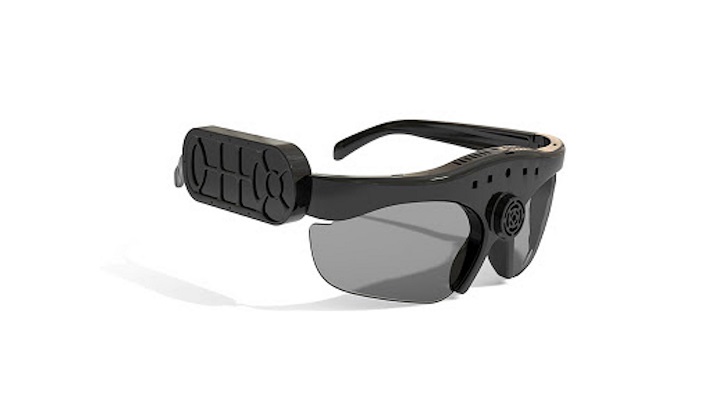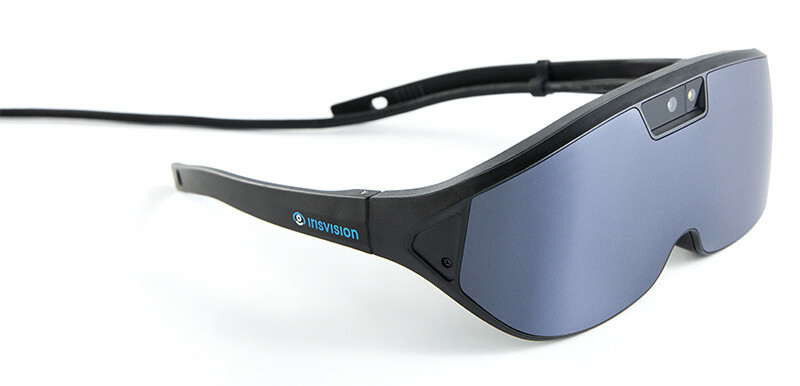Enhancing Ease Of Access With Assistive Innovation for the Blind
The integration of assistive modern technology for the blind stands for a critical development in accessibility, basically changing exactly how people browse their environments and involve with culture. As we check out the varied kinds of assistive tools and their tangible effects on everyday living, it comes to be vital to check out just how continuous technical improvements are improving the landscape of support for the blind area.
Review of Assistive Modern Technology
Assistive technology refers to a variety of devices and software application made to boost the capacities of people with handicaps, consisting of those that are aesthetically damaged or blind. This technology plays a critical duty in advertising freedom and improving the lifestyle for users. By offering alternate approaches for accessing details and executing everyday jobs, assistive innovation equips individuals to browse their settings more efficiently.
The advancement and execution of assistive modern technology embrace a range of concepts focused on fostering ease of access. These principles include user-centered design, which focuses on the demands and preferences of the individual, and the integration of technology right into daily activities. Such advancements ensure that assistive devices are not just practical however also instinctive and simple to use.
In addition, assistive modern technology includes a diverse range of solutions, from low-tech alternatives like magnifiers to state-of-the-art innovations such as display visitors and Braille displays. The continuous evolution of this area is driven by the requirement to resolve the special challenges encountered by people with aesthetic impairments (Wearable technology for low vision). As technology remains to breakthrough, the possibility for improving ease of access and advertising inclusivity stays encouraging, ultimately adding to a more fair culture

Kinds of Assistive Instruments
Many kinds of assistive gadgets are available to sustain people who are blind or aesthetically damaged, each created to address particular demands and obstacles. These devices can be extensively classified right into three main kinds: low-tech, mid-tech, and high-tech services.
Low-tech gadgets consist of things such as magnifiers, Braille tags, and tactile maps. These are fairly basic devices that boost the user's capability to engage with their setting without calling for complex technology.
Mid-tech devices typically include a lot more sophisticated functions, such as electronic magnifiers and portable Braille note-takers. These devices can offer functionalities like speech output, allowing users to access information more efficiently.

Effect On Daily Living
The schedule of different assistive tools substantially enhances the lifestyle for individuals that are blind or visually damaged, impacting their everyday living in profound methods. By incorporating innovations such as display readers, Braille presents, and audio description services right into their routines, customers gain higher freedom and independence. These devices facilitate access to details, enabling individuals to execute everyday tasks, such as reviewing emails, navigating public rooms, and delighting in media material.
In addition, assistive devices equip people to involve more fully in social communications and area tasks. The ability to use smart devices equipped with availability attributes permits seamless communication and connection with others. This connection cultivates a feeling of belonging and decreases feelings of seclusion.
In specialist setups, assistive technology supports efficiency by enabling people to full work tasks successfully. Tools like voice recognition software program and specialized magnification gadgets allow individuals to take part in the workforce on equivalent footing with their sighted see this website peers.

Improvements in Modern Technology
Recent technological developments have substantially changed the landscape of devices offered for individuals that are blind or aesthetically damaged. The combination of artificial knowledge (AI) and equipment learning has triggered applications that boost navigation and item acknowledgment. Mobile phone apps can now make use of eye doctor salary AI to determine and describe environments in real-time, supplying individuals with valuable contextual details.
In addition, improvements in haptic innovation have brought about the growth of wise canes outfitted with sensors that spot barriers and supply tactile responses. This equips users to browse their environment with raised self-confidence and independence. In addition, advancements in text-to-speech software and braille display screens have boosted the availability of digital web content, permitting seamless communication with various media.
Wearable innovations, such as smart glasses, are additionally making strides in aiding aesthetic impairment. These gadgets can provide increased reality experiences, overlaying critical information onto the individual's field of vision. Jointly, these developments not just enhance the lifestyle for individuals who are blind yet also advertise better addition in culture. As technology remains to progress, the potential for a lot more transformative devices continues to be imminent.
Future Trends and Innovations
As innovation rapidly proceeds, the future of More Help assistive tools for people who are blind holds tremendous guarantee. Innovations in fabricated intelligence (AI) and equipment discovering are poised to reinvent the way blind individuals interact with their settings. As an example, AI-driven applications are being established to enhance item recognition, enabling customers to identify and navigate their surroundings with better convenience and precision.
Furthermore, improvements in haptic feedback technology are allowing the development of responsive maps and navigating help that provide real-time details via touch. These developments not only enhance wheelchair yet also foster self-reliance. In addition, wearable tools geared up with enhanced reality (AR) features are emerging, supplying individuals aesthetic information with sound summaries, thus bridging the gap in between the digital and physical globes.
In addition, the assimilation of wise home technology offers brand-new possibilities for accessibility, enabling individuals to manage their living atmospheres through voice commands or smartphone applications. As partnership between technology programmers and the blind area proceeds, the focus on user-centered design will make certain that future innovations are tailored to satisfy the special needs of this population (Wearable technology for low vision). The trajectory of assistive technology promises a much more comprehensive and empowering future for individuals who are blind
Verdict
In verdict, assistive innovation plays a critical function in boosting ease of access for individuals with aesthetic impairments. Continual advancements in innovation and user-centered layout ensure that these tools provide effectively to the distinct requirements of the blind community.
The integration of assistive modern technology for the blind stands for a crucial improvement in availability, basically changing just how people navigate their atmospheres and involve with culture.Assistive innovation refers to a range of gadgets and software created to enhance the abilities of individuals with disabilities, including those who are blind or visually impaired. Wearable technology for low vision.As innovation quickly proceeds, the future of assistive tools for people that are blind holds immense promise. The trajectory of assistive technology promises an extra comprehensive and empowering future for people that are blind
In conclusion, assistive technology plays an essential role in enhancing ease of access for individuals with aesthetic impairments.